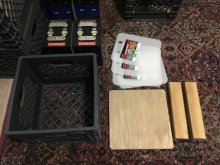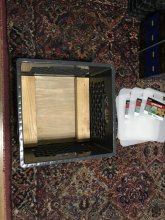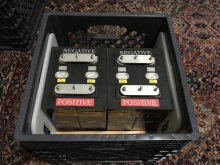Im gonna file that in the "truisms to never forget" catagory.
Next to "if you dont know what it is... you dont need it."
Don't forget about: If you don't know what it is, but everyone else seems to have one, maybe some research is in order.
Im gonna file that in the "truisms to never forget" catagory.
Next to "if you dont know what it is... you dont need it."
As the philosophy pertains to coming across one in a store, I think if everyone else has one I know what it is.Don't forget about: If you don't know what it is, but everyone else seems to have one, maybe some research is in order.
As the philosophy pertains to coming across one in a store, I think if everyone else has one I know what it is.
Do you go to surplus or thrift stores? I see a lot of weird stuff there, and I keep reminding myself of the truism to avoid wasting time, thats all.
Yep.I can't see why those big as% zip ties wouldn't hold the pressure. I would think a person would need to waste a couple, however, getting a feel for "when tight is tight enough". The lexan might need to be thick, however, for it not to distort when you crank down on the zip ties.
I'm big on the "but if everyone else seems to have one....order two" which tends to keep me in trouble and broke because you guys have a LOT of stuff.Don't forget about: If you don't know what it is, but everyone else seems to have one, maybe some research is in order.





You know some states have this milk association police that come and arrest you for misappropriating their equipment... LOL.Here’s an alternative low tech approach for keeping the cells compressed when charged that I call the Milk Crate Compression approach for 280Ah LiFePo4 cells.
Four 280Ah cells (side by side) fill a milk crate with about 1/2” of extra space. Slide in 4 cutting boards (2 each end) and thin cutting sheets (between the cells) from the Dollar Store and your cells fit snugly. Cells are taped together with thin cutting sheets between them and centered in the milk crate on the sides with 2x3s. There’s a 3/4” plywood lining the bottom to provide a flat surface for the cells. The plastic crate will restrain the cells and yet allows for some flexibility when they expand. Plus if the cells need a bit more space because the bloat is more than expected when charged, then one can remove a cutting board spacer. This simple approach, not as nice as those 3D or metal compression builds, does allows the cells to ”breath“ and keeps them constrained proportionally to their charge. I’d expect better cell life cycle from having some level of constraint than if no constraints were used. Here’s some photos of what I‘m assembling.
It is properly spelled CDO. has to be alphabetized...You sound like me. And they say we're "OCD", pfftttt
If the compression adjustment is entirely from the bottom it doesnt seem to me that the pressure would be uniform?No, you need to go totally overboard, like me. You will thank yourself in 8 years when you squeeze extra cycles out of your old batteries and all your friends on here upgrading to the latest and greatest.Buy a welder from harbor freight, a spool gun, scrap angle from Arlo metals, teach your self to weld ugly (but strong) and make one of these. Cover the threaded rods with an aluminum tubes. Complete the project with removable rigid foam insulation.
Compression Dis OrderIt is properly spelled CDO. has to be alphabetized...


